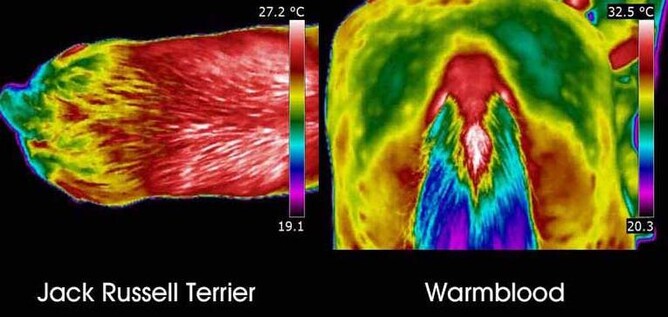Few people have been asking me well if it’s not lactic acid then what causes muscle soreness after workouts.
The specific type of muscle soreness has been called “delayed onset muscle soreness” (DOMS), was thought to be caused by lactic acid build up in the muscles during strenuous workouts where the body’s oxygen supply is depleted. Recent research has shown this is not the case at all and has even shown that lactic acid is actually used by muscles for fuel when oxygen supplies are depleted.
One would have thought that lactic acid had nothing to do with DOMS, due to the fact that this type of muscle soreness doesn’t appear until around 24-72 hours or so from the time the horse/dog has been exercised, yet the lactic acid build up only lasts in the muscles for at most an hour or two after the workout is complete. So if it’s not lactic acid that is causing this soreness, what is it?
Delayed onset muscle soreness (DOMS) is now understood to be caused by micro-fractures in the muscle cells themselves. This happens when doing an activity that the muscles aren’t used to doing or have done it in a much more strenuous way than they are used to.
This is also why after strenuous exercise in a specific way a few times and allowing the muscles to recover, that it won’t typically get sore again from doing that activity at a similar intensity level, so long as it is continued on a somewhat regular basis. The muscles quickly adapt to being able to handle new activities so as to avoid further damage in the future; this is known as the “repeated-bout effect”. When this happens, the micro-fractures typically won’t develop unless the activity has changed in some substantial way. As a general rule, as long as the change to the exercise is under what is normally done, DOMS are not experienced as a result of the activity.
For a more technical explanation, DOMS is caused by ultra structural disruptions of myofilaments, particularly with the z-disk and with damage to the muscle’s connective tissues. Muscle biopsies taken a day after hard exercise often show bleeding of the z-band filaments that hold muscle fibers together. The pain then is thought to be largely due to this damage to the connective tissue, which in turn increases sensitivity of the muscle’s nociceptors (pain receptors); this then causes pain with stretching and the like, basically when using the muscles.
The delayed effect is thought to be as a result of the fact that the inflammatory process that ends up making the nociceptors more sensitive takes some time to happen.
Important Facts:
Another common symptom of DOMS, beside the pain, is swelling in the muscles. The muscles are swelling as a response to the microscopic muscle tears.
Methods that have been shown to minimize muscle soreness after workouts are any activities that increase blood flow to the muscles, including: manual therapy (AMRT); hot baths; low-intensity workouts;
Recent research has also shown that extended warm up sessions, before exercising in some way the body isn't used to, will also help reduce DOMS.
Alternatively, gradually increasing workout intensity, under 10% a week, should allow progress in workouts while experiencing minimal or no muscle soreness.

